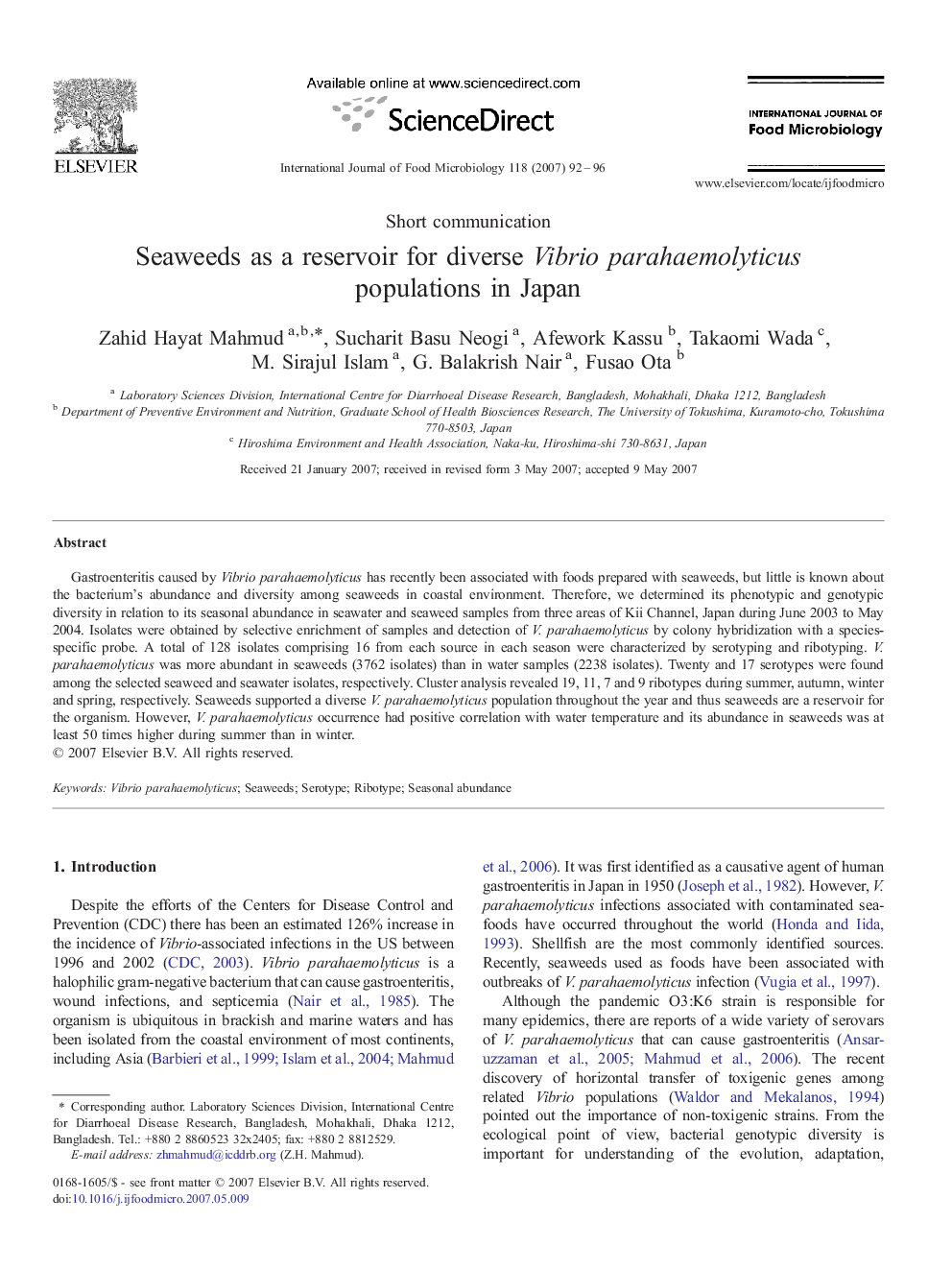| Article ID | Journal | Published Year | Pages | File Type |
|---|---|---|---|---|
| 4369415 | International Journal of Food Microbiology | 2007 | 5 Pages |
Gastroenteritis caused by Vibrio parahaemolyticus has recently been associated with foods prepared with seaweeds, but little is known about the bacterium's abundance and diversity among seaweeds in coastal environment. Therefore, we determined its phenotypic and genotypic diversity in relation to its seasonal abundance in seawater and seaweed samples from three areas of Kii Channel, Japan during June 2003 to May 2004. Isolates were obtained by selective enrichment of samples and detection of V. parahaemolyticus by colony hybridization with a species-specific probe. A total of 128 isolates comprising 16 from each source in each season were characterized by serotyping and ribotyping. V. parahaemolyticus was more abundant in seaweeds (3762 isolates) than in water samples (2238 isolates). Twenty and 17 serotypes were found among the selected seaweed and seawater isolates, respectively. Cluster analysis revealed 19, 11, 7 and 9 ribotypes during summer, autumn, winter and spring, respectively. Seaweeds supported a diverse V. parahaemolyticus population throughout the year and thus seaweeds are a reservoir for the organism. However, V. parahaemolyticus occurrence had positive correlation with water temperature and its abundance in seaweeds was at least 50 times higher during summer than in winter.
